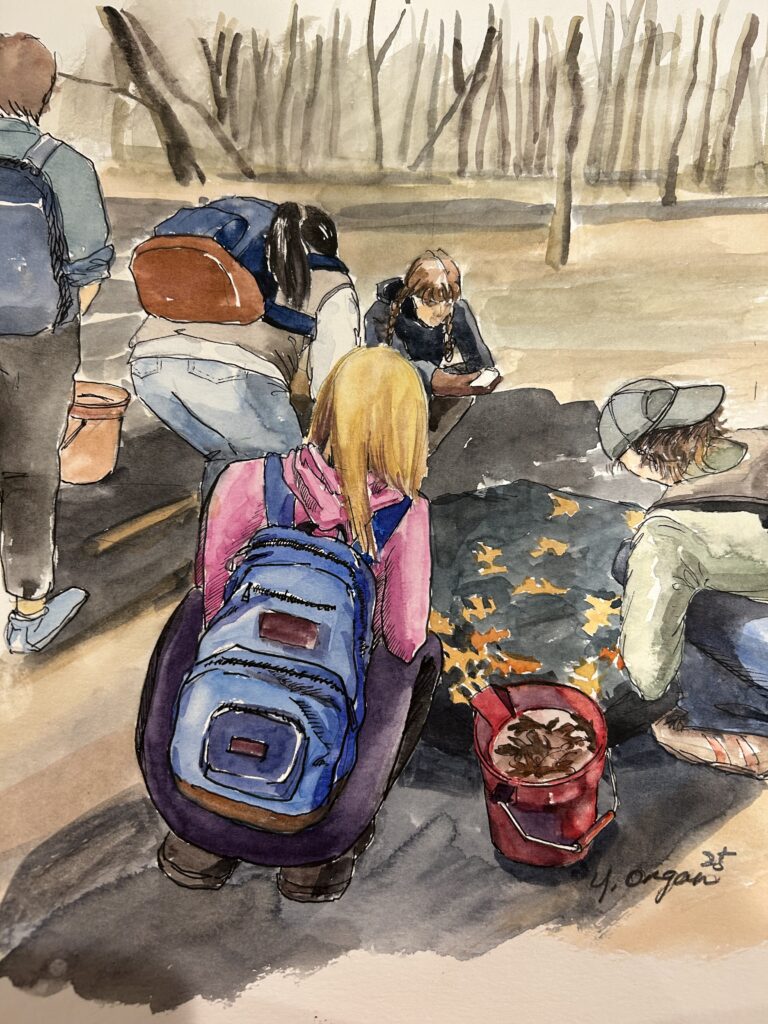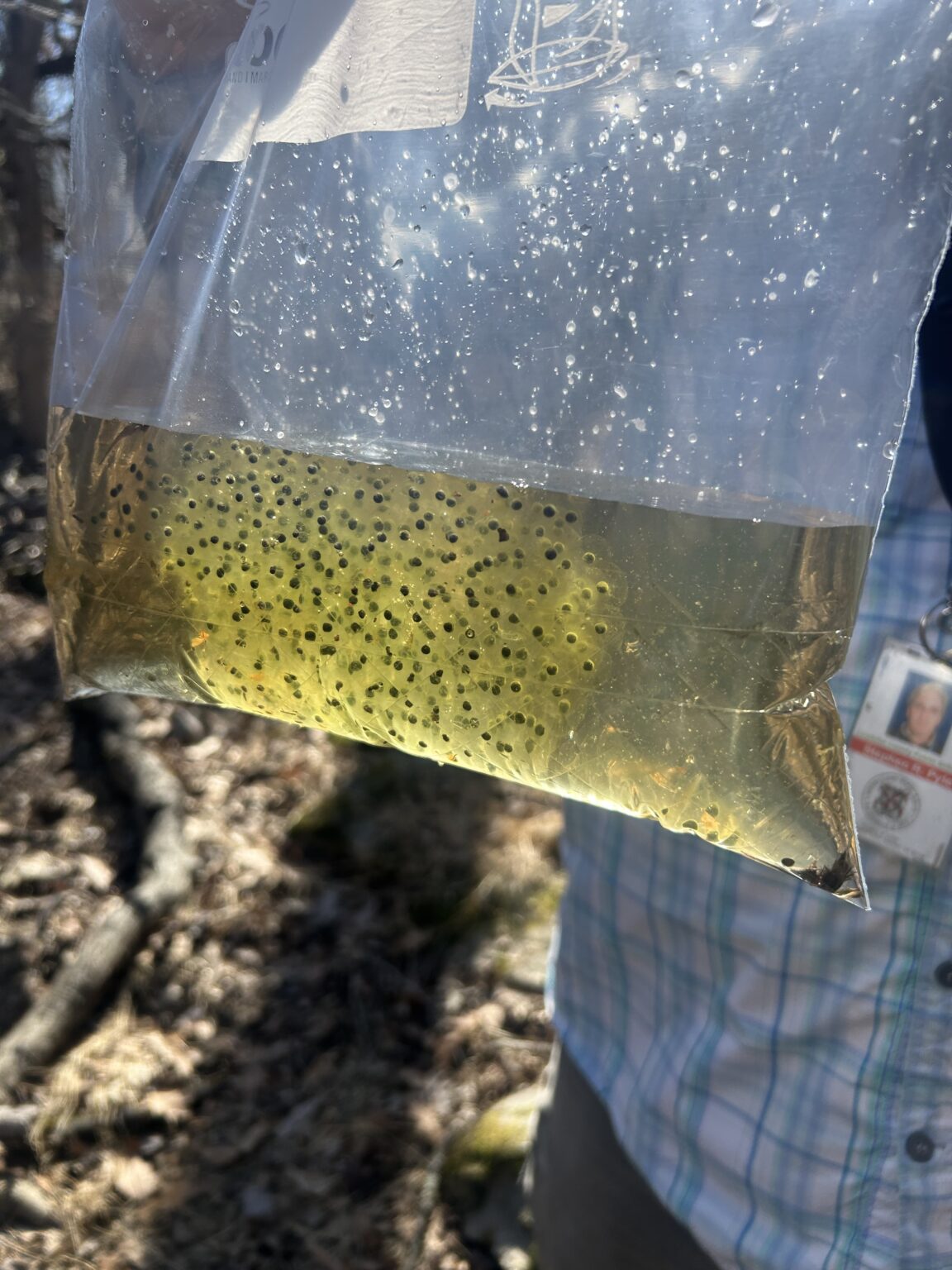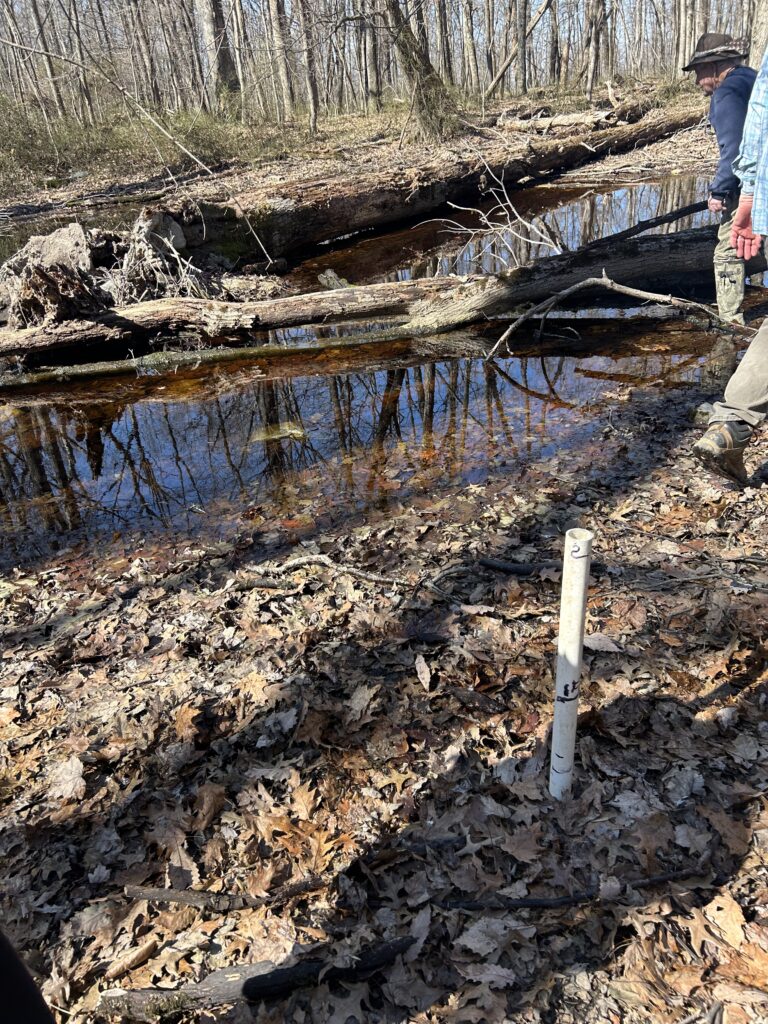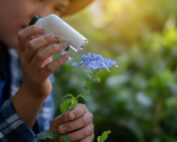Teaching and Learning about Obligate Species in Vernal Pools
Suzanne E. Hiller and Lisa Klug
 |
| Vernal Pools by Youngmi Organ |
On a spring day in March, along the Appalachian Trail between Virginia and West Virginia, we came across what appeared to be a calm pond in the middle of a wooded area–what we had really found was a vernal pool.
Vernal pools are temporary, shallow bodies of water that fill up in the spring and then dry up in the summer (Dunn, 2022). These features are important for the breeding cycle of certain organisms known as obligate species.
Not only were we fortunate to find evidence of five obligate species in one vernal pool, but we learned that there were many opportunities to connect students with nature, reinforce content knowledge, foster scientific observation skills, and provide opportunities to protect nature.
Obligate Species
Obligate species are organisms that live or breed in a particular environment while fulfilling a specific role or niche (Heiser, 2025). Vernal pools are ideal for certain obligate species because of the lack of fish, which are predators to offspring. Some obligate species that we found include wood frogs, fairy shrimp, marbled salamander, Jefferson salamander, and spotted salamander. As we found out early on, wood frogs (Lithobates sylvaticus) travel to vernal pools to lay their eggs(Smithsonian Institution, 2001), but the trip can be hazardous.
Our story started, as we made our way through the woods to find a vernal pool, where we saw some silvery-black spheres on a log–evidence of a wood frog captured by a hawk on the way towards the vernal pool, leaving her eggs behind. Female wood frogs that do reach vernal pools, lay an egg mass in the water that contains 1000-3000 eggs (University of Michigan, 2024). Once these eggs hatch into tadpoles, how can you tell a wood frog tadpole apart from a salamander tadpole? Wood frog tadpoles do not have legs or feathery external gills (Smithsonian Institution, 2001).
 Once we reached the first vernal pool, we were able to find fairy shrimp (Branchinecta lynchi), invertebrates that are related to lobsters and crabs as a type of crustacean. These obligates differ from the others in that when the vernal pools dry up, eggs called cysts are left behind to hatch when the rain comes the following spring (The National Wildlife Federation, n.d.).
Once we reached the first vernal pool, we were able to find fairy shrimp (Branchinecta lynchi), invertebrates that are related to lobsters and crabs as a type of crustacean. These obligates differ from the others in that when the vernal pools dry up, eggs called cysts are left behind to hatch when the rain comes the following spring (The National Wildlife Federation, n.d.).
As we began to explore the vernal pool, we found evidence of three types of salamanders in the form of eggs and tadpoles. The smallest of the three salamanders we studied, the marbled salamander (Ambystoma opacum), has an average length of 9-10.7 cm. Characteristics of this type of salamander include a stout body with silvery gray markings on females and white markings on males (Virginia Herpetological Society, 2025)
 The Jefferson salamander (Ambystoma jeffersonianum) has an average length of 10.7-18 cm is long and slender in comparison to the other salamanders. They can be dark brown to almost black, with light blue markings on the side. Both the marbled salamander and Jefferson salamander lay green masses of eggs known as clutches (Virginia Herpetological Society, 2025).
The Jefferson salamander (Ambystoma jeffersonianum) has an average length of 10.7-18 cm is long and slender in comparison to the other salamanders. They can be dark brown to almost black, with light blue markings on the side. Both the marbled salamander and Jefferson salamander lay green masses of eggs known as clutches (Virginia Herpetological Society, 2025).
The spotted salamander (Ambystoma maculatum) averages in length from 11.2-19.7 cm with a dark body and yellow or orange spots. A distinctive characteristic of the spotted salamander are white clutches or egg masses (Virginia Herpetological Society, 2025).
A commonality of these salamanders was that they thrived in vernal pools, yet young salamanders will eat other salamanders. How can these three species survive in the same environment? The answer is niche partition.
Niche Competition and Niche Partition
The three obligate species of salamanders have a similar niche within the vernal pool that results in niche competition. In other words, the organisms are competing for the same resources for their survival. In order for all three types of salamanders to thrive, niche partition is necessary, wherein the organisms function at different times, spaces, or ways in the same location. As a case in point, the marbled salamanders lay their eggs before winter, so that the newly formed tadpoles emerge before the other types of salamanders (Greenwald et al., 2016).
Building on Scientific Observation Skills
We found that there were many ways to build on scientific observation skills and to help students become more adept at using them to synthesize information. Using refined scientific observation skills, like counting, collecting, classifying, and measuring, is not always intuitive. The teacher, as a facilitator of learning, can help students move from initial stages of noticing to become proficient at using observational accounts in a way that reflects the habits and methods of professional scientists (Eberbach & Crowley, 2009; Hiller & Kitsantas, 2015). We observed several instances of instructors supporting their students in building scientific observations skills.
In one instance, a field expert held up a white clutch of the spotted salamander, and asked if it was newly formed. Through a series of instructor-led questions and observations, students identified that this was a new clutch because of the absence of algae. In a symbiotic relationship, algae support the growth of salamander eggs through oxidation while the nitrogen waste given off from the eggs supports the algae. In fact, the scientific name for algae (Oophila ambystomatus) means “salamander egg loving” (Dunn, 2022).
 Later in the day, we came across a calm creek that had been closed off due to some debris. The students noticed wood frog eggs floating on the top of the stream–in essence, this water feature had become a vernal pool.
Later in the day, we came across a calm creek that had been closed off due to some debris. The students noticed wood frog eggs floating on the top of the stream–in essence, this water feature had become a vernal pool.
The students stood on an embankment in between the vernal pool and another flowing stream. The teacher asked where the wood frogs came from. Through discussion, the students surmised that the wood frogs had to come from the embankment next to the vernal pool rather than from the other side of the flowing river because of an easier journey.
Opportunities to Protect Nature
The experience with wood frogs afforded a new opportunity for students to learn to protect nature. Upon coming to another vernal pool, the teachers and students discussed how the water level was very low. It was clear that masses of wood frog eggs would dry up. Students took this opportunity to transport the eggs safely to the middle of the pond to protect the organisms. Activities such as these help students to not only learn about their environment but how simple actions can protect obligate species.
Teaching Outdoors about Vernal Pools and Obligate Species
If you are an educator who would like to work with students to learn about obligate species and vernal pools, the materials needed are simple. It is helpful to have gallon size Ziplock bags, buckets, and stream nets as used to study macroinvertebrates. Be sure to consult local guidelines as some states have regulations about collecting obligate species. For instance, in some areas, new laws have been instituted to protect salamanders from being used as fish bait.
During this type of experience, consider opportunities to guide students through questioning, observations, and reflections to analyze the environment and organisms they are studying. It is also helpful to form collaborations with local naturalist societies to prepare for upcoming guided field trips. The time for planning is well worth the many learning opportunities for students.
Share
LATEST RESOURCES
Engaging Digital Natives Through Literacy, Outdoor Learning, and Technology
Engaging Digital Natives Through Literacy, Outdoor Learning, and Technology
Erik […]
Pages to Puddles: Story Walks as a Creative Tool for Assessing Stormwater Knowledge
Pages to Puddles: Story Walks as a Creative Tool for […]
Teaching and Learning about Obligate Species in Vernal Pools
Teaching and Learning about Obligate Species in Vernal Pools
Suzanne E. […]





![A logo for The Sweeping [...]
</p srcset=](https://blueswallowfarmfoundation.org/wp-content/uploads/2025/03/sweeping-change-fund-1024x538.jpg)

